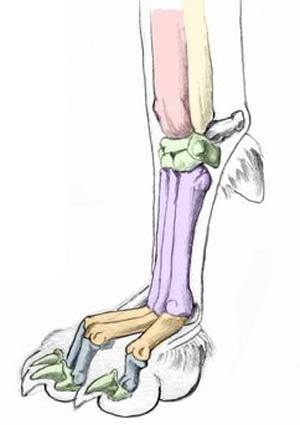Dog Paws Are Well-Designed

There are five parts that make up a dog’s paw: A – the claw, B – the digital pads, C – the metacarpal (front) and metatarsal (back) pads, D – the dew claw and E – the carpal pad. All the pads (except the carpal pad) help with shock absorption and carrying the bulk of the canine’s weight when in motion. The carpal pads help when a dog is on a slope or sliding. The claws help dogs get a grip and dig. The purpose of the dew claw is not known exactly.

Did you ever notice how no matter how cold it gets outside, your dog can usually prance around on its bare paws with no trouble at all? Well, it’s not some kind of miracle of nature that makes this so, according to a study in the Journal of Veterinary Dermatology, it’s actually a trait that scientists believe canines evolved through years of living in colder climates. You see, for starters, dogs have developed a thick layer of fatty tissue in the pads on bottom of their paws, and fatty tissue doesn’t conduct cold or freeze as quickly as other tissue. Secondly, the blood vessels in dogs’ feet act as heat exchangers; arteries and small veins (venules) are very close together, allowing for heat exchange between the two. The paw cools when it makes contact with the frozen ground, but warmth from the arteries transfers to the venules and keeps the paws at a tolerable temperature. When the blood flows back into the dog’s body, it’s warmed again by the transfer, thus keeping the dog’s internal temperature from getting too low. As was mentioned before, these traits have led scientists to believe that the domestic dog originally evolved in colder climates before spreading into different environments.
